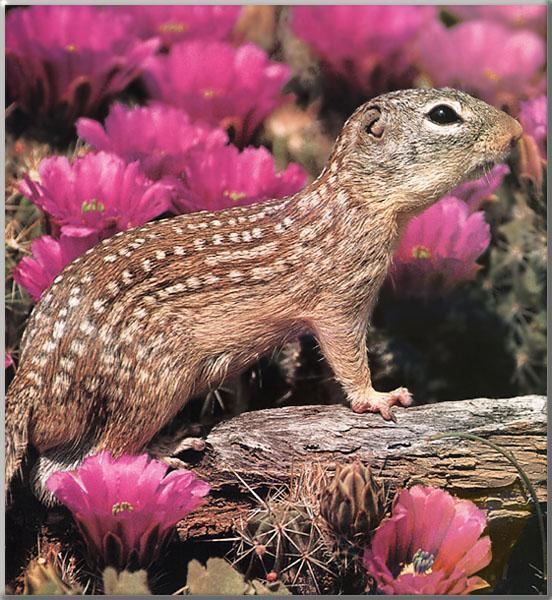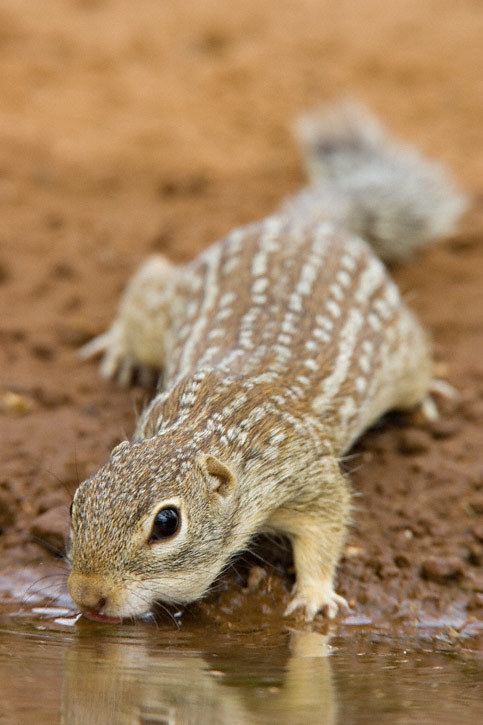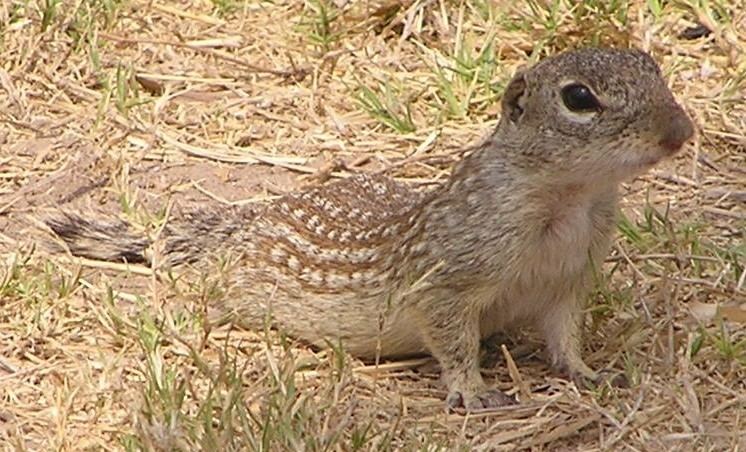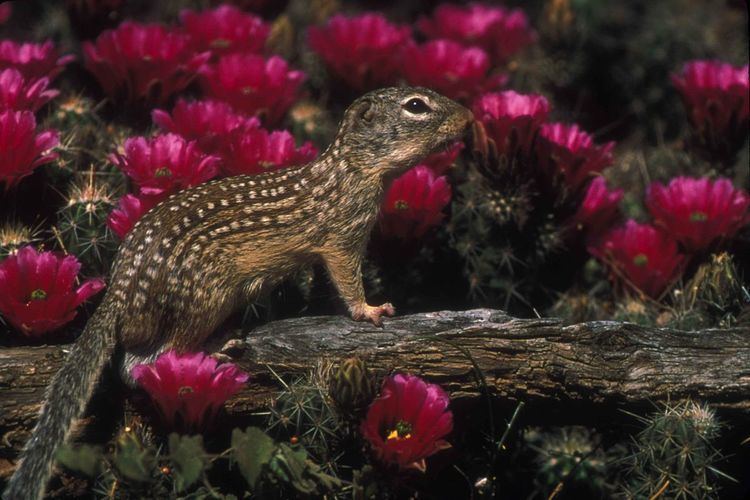Higher classification Ictidomys | Phylum Chordata Family Sciuridae Scientific name Ictidomys mexicanus Rank Species | |
 | ||
Similar Squirrel, Spotted ground squirrel, Sierra Madre ground s, Ring‑tailed ground squirrel, Mammal | ||
Mexican ground squirrels ictidomys mexicanus rabbits and sparrows feeding on seeds
The Mexican ground squirrel (Spermophilus mexicanus) is a species of rodent in the family Sciuridae. It is found in Mexico and the United States.

Description and Phylogeny
The Mexican Ground Squirrel (Spermophilus mexicanus) is a small to medium-sized rodent with nine rows of white spots on its back. It is about fifteen inches in length and the males are larger than the females. It also has small white circles of fur around its eyes and small ears.

The Phylogeny for the Mexican Ground Squirrel is as follows: Phylum Chordata, Class: Mammalia, Order: Rodentia, Family: Sciuridae, Genus: Spermophilus. It is closely related to many ground squirrels including the Red Ground Squirrel, the Gray Squirrel, and also other rodents in the family Sciuridae which has 278 species and 51 genera including: chipmunks, marmots, and prairie dogs, and many more. One of its closest relatives is the Thirteen Lined Ground Squirrel (S. Tridecemilneatus.

Distribution and Habitat
The Mexican Ground Squirrel can be found in areas near Northern Mexico, Texas' Gulf Coast, and into western and central Texas as well as Southeastern New Mexico. The Mexican ground squirrel lives in flat, brushy or grassy areas and usually prefers areas with gravelly or sandy soil or areas with that have mesquite

While its original habitat has been and continues to be destroyed by humans, it has adapted well to human civilization and can now be found on golf courses and other grassy areas such as the sides of highways Each squirrel normally has more than one burrow and each of them have as many as five escape tunnels The tunnels are not marked by a mound of dirt on top. Most burrows have a sleeping chamber for the offspring which is lined with grasses.

Diet, Behavior, Reproduction, and Interesting Physiology
The Mexican ground squirrel is omnivorous, but eats primarily seeds and grains. Its diet includes: seeds, nuts, grains, roots, bulbs, plant stems, leaves, mice, insects and eggs. It often stores seeds, grains and nuts in its cheeks pouches and takes them back to its den to eat later In the summer it eats insects and has been seen eating roadkill of the side of the highway.
The mating season of S. Mexicanus is very long and lasts from April to mid July, with a peak in May. Females can mate after their first season of hibernation. It is common for most Mexican Ground Squirrels to Hibernate, but there have been cases where they have not. The species is normally solitary, but come together in groups during the mating season. It has been found that female hormone levels change during this period to allow the coming together of groups without aggression. During the mating season, The female will prepare a nesting chamber in her burrow and line it with mesquite and grass. The average litter size is five, but can range from one to ten. The young are born toothless, without fur, and will stay with their mother for three months before leaving to live on their own.
The Mexican Ground Squirrel has evolved an interesting adaptation to help it survive after being attacked by some snakes. It has developed resistance to the venom of the Western Diamondback Rattlesnake. The squirrel has an antihemorrhagic factor which neutralizes hemorrhagic activity of this specific species of rattlesnake. In addition, the squirrel's ears have evolved to be small, but effective in hearing predators. They are on the side of their head and point slightly behind the squirrel, allowing it to better hear what its eyes cannot see.
